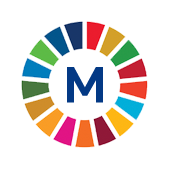 10.6.1 (16.8.1) Proportion of voting rights in international organizationsMetadataPeriod: AnnualYear: 2025 |
 10.6.1 (16.8.1) Proportion of voting rights in international organizationsMetadataPeriod: AnnualYear: 2025 |
| METADATA |
| Indicator information |
| Definition and methodology |
| Data source type and data collection method |
| Notes |
| ID of global indicator |
| Metadata update |
| Global metadata |
| Indicator information | Top |
| Indicator | |
10.6.1 (16.8.1) Proportion of voting rights in international organizations | |
| Global indicator name | |
10.6.1 (16.8.1) Proportion of members and voting rights of developing countries in international organizations | |
| Target | |
10.6 Ensure enhanced representation and voice for developing countries in decision-making in global international economic and financial institutions in order to deliver more effective, credible, accountable and legitimate institutions | |
| Goal | |
Goal 10. Reduce inequality within and among countries | |
| Definition and methodology | Top |
| Definition | |
The share of a country's number of voting rights in an international organization in the total number of voting rights in an international organization. | |
| Methodological explanations | |
The indicator is calculated independently for five different international institutions: The United Nations General Assembly (UNGA), the United Nations Economic and Social Council (ECOSOC), the International Monetary Fund (IMF), the International Bank for Reconstruction and Development (IBRD) and the International Finance Corporation (IFC). The computation uses each institutions’ own published membership and voting rights data from their respective annual reports.
Annual reports, as presented on the website of the institution in question, are used as sources of data. Sources of information by institution:
Data release calendar: United Nations General Assembly: continuous; United Nations Economic and Social Council: annually in August; International Monetary Fund: annually in October; International Bank for Reconstruction and Development: annually in September and International Finance Corporation: annually in September
The data is compiled and the proportions calculated by the Financing for Sustainable Development Office (FSDO), United Nations Department of Economic and Social Affairs (UN-DESA). Desk review, annually, pulling data from the above-mentioned sources. Data are collected annually in March. | |
| Method of calculation | |
The ratio of voting rights is calculated as the country's number of voting rights in an international organization is divided by the total number of voting rights in an international organization. This ratio is expressed in percentages. | |
| Unit of measure | |
% | |
| Available disaggregation | |
International organization | |
| Territorial level | |
Republic of Serbia | |
| Data source type and data collection method | Top |
| Data source | |
United Nations | |
| Periodicity of data collection | |
Annual | |
| Notes | Top |
Data for this indicator are taken from the UN SDG global database https://unstats.un.org/sdgs/dataportal
This indicator is the same as indicator 16.8.1 | |
| ID of global indicator | Top |
C200205 | |
| Metadata update | Top |
| 30/5/2025 | |
| Global metadata | Top |
https://unstats.un.org/sdgs/metadata/files/Metadata-10-06-01.pdf | |